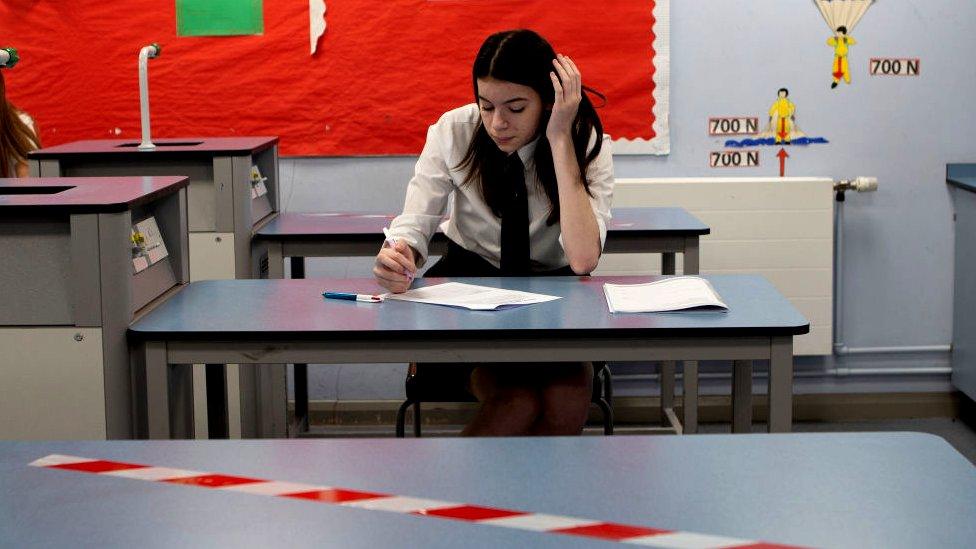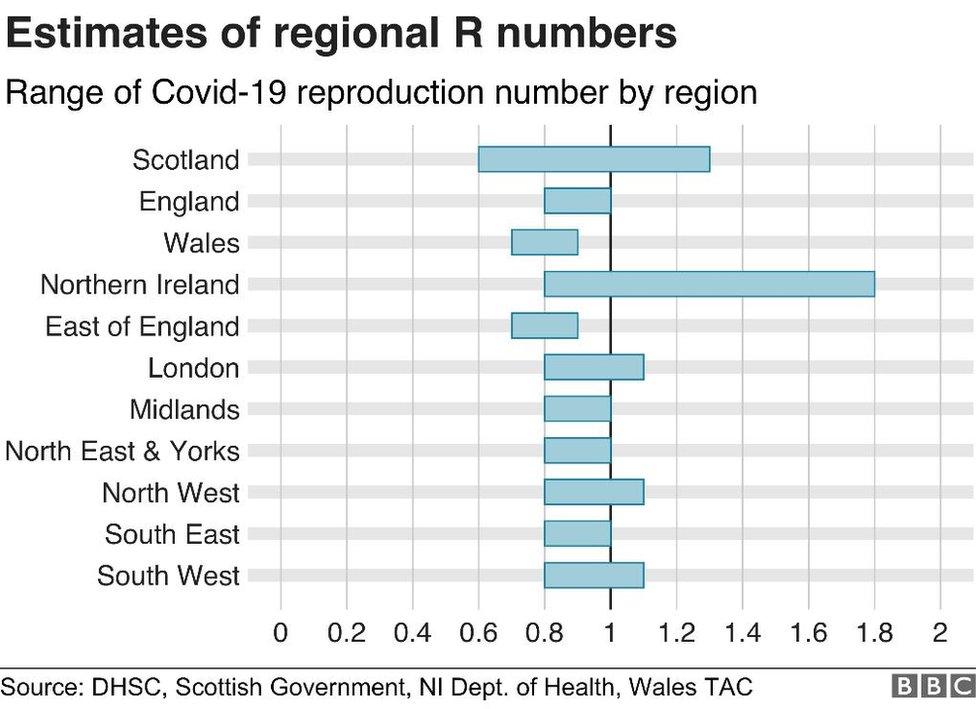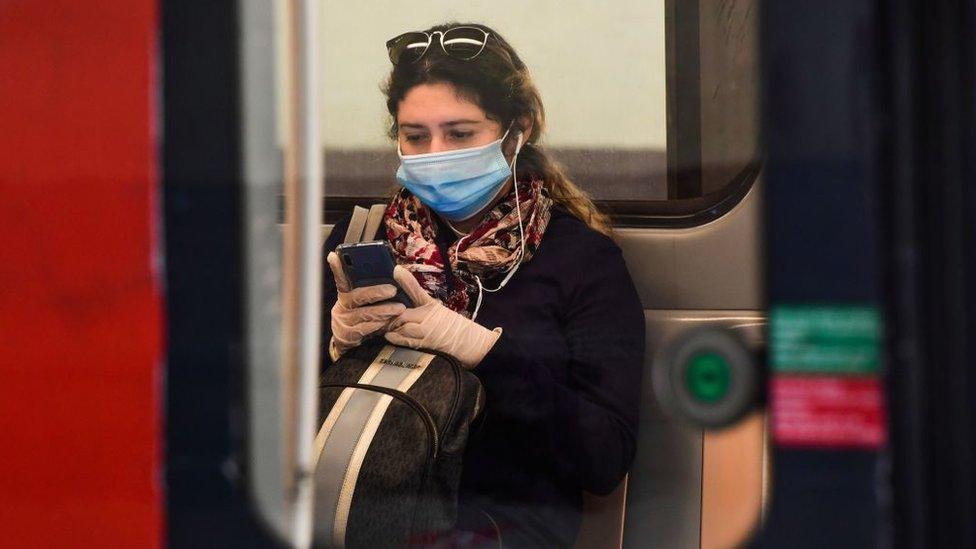Expert calls for 'missing' Test and Protect data
- Published

Prof Bauld said the data was needed by researchers
A public health expert is calling on the Scottish government to release details on the number of people contacted by NHS Test and Protect.
Prof Linda Bauld believes the "missing" data is essential for researchers to check the system is working.
After schools reopened, and the infection rate appeared to rise, pressure is mounting to prove the system can fulfil its role.
The figures were promised before pupils returned to school.
The Scottish government says they will now be available at the end of August.
Prof Bauld, from Edinburgh University, has said that failure to publish the data showed a lack of transparency on the government's part.
Speaking on Good Morning Scotland on Friday, she said it was the "missing piece" of the jigsaw.
'Confidence in the system'
She said: "The data published so far only contains number of close contacts successfully traced and spoken to, but what it doesn't contain is the proportion of contacts not reached.
"I want to see all the data to understand what's going on. All we have at the moment is the number of people who have been tested and the number of people who are contacts.
"We don't know the proportion of people that are being followed up, how long it is taking to do that and we don't know what happens to those people who are followed up.
"We need to see all of that data to be confident the system is working as it should be."

She believes the government has that level of information after the first minister revealed that during the Aberdeen outbreak, a significant portion of contacts were traced within a day and all the contacts were found within three days.
The professor said that Scotland has done "extremely well" on other areas of the data but outlined the information she would also like to see published.
'Aim to be better'
"What I would like to see, is the proportion of contacts reported by index case, so that's the person who tested positive, that have been successfully reached, so that's that percentage," she said.
"Also the time taken to reach the individual, that's crucial because to shut down the chains of transmission it needs to be rapid and I'd also like to see whether follow-up occurs for those who are asked to isolate.
"Finally, and this is probably optional but would be interesting, whether cases have been symptomatic or not because there's routine testing in care homes and in the NHS and of course those people will have contacts as well so let's aim to be even better than the countries that are currently reporting that data and give all of that data, not just to researchers like me but to the public as well."

Schools returned across Scotland this week
Justice Secretary Humza Yousaf said the government was working hard to ensure the efficiency of the Test and Protect system.
He told the BBC: "When that data is available, and available in a form that can be verified, then of course we would release that data. This government has released data throughout this pandemic to be as transparent as possible."
Questioned on why schools have reopened without information on the proportion of contacts traced being known, he said: "We would not take any gamble or any risk when it comes to young people's education. In fact, what we've said from day one is that our children's education is a priority."
He added: "There's a number of harms we have to balance, a range of data we have to look at. And having looked at that data, we're confident that schools can reopen."

Analysis by Kenneth Macdonald, BBC Scotland science correspondent
When tracking this pandemic it can be easy to forget that all these numbers are people. But the authorities need the big numbers to build the big picture of how the virus is attacking Scotland.
And when some promised data fails to make an appearance the conspiracy antennae tends to twitch.
But here the reality is more prosaic.

Latest data shows a rise in the estimated R number in Scotland
The Scottish government's figures already tell us how many cases of the virus are known about and how many close contacts each of these people has reported.
However, there are known unknowns. How many contacts can't be found - and how quickly are the contact tracers finding the ones that can be?
It's clear that the people who need those numbers most urgently - the ones doing the virus detective work and tracking down people who may not realise they are at risk - have the data they need.
But the rest of us will have to wait a while longer. Ministers say the data is not yet in a robust enough state to be released widely.
Why does it matter? A recent Lancet paper , externalsuggested that 68% of close contacts would have to be traced for schools to reopen safely across the UK.
While we don't yet know officially if that target has been reached - and Scotland's schools are already open - the early, albeit anecdotal, indications are that it is being exceeded comfortably.
What's more, most Scots are said to be responding well when the contact tracers call.
This is particularly good news because in the absence of a vaccine the most effective weapon against the virus is us.

Jamie Halcro Johnston from the Scottish Conservatives said Scots were likely to be living with the coronavirus and the impact of it for some time and needed to have the confidence that the systems were in place and working.
He said: "We are talking about a health pandemic, and confidence in the government is different to confidence in a system which is either working or it isn't.
"There are no indications there are problems but we just don't know that because the Scottish government haven't provided the data - despite saying they would."

The system will be primarily telephone-based but apps are in development
A Scottish government spokeswoman said: "The Scottish government is committed to setting out as much data as possible about the Covid-19 pandemic to help inform and improve our response.
"We work closely with National Records of Scotland and Public Health Scotland to ensure the figures we publish are robust, and will publish significantly more information about the contact tracing process, including the percentage of positive cases followed up, time taken to reach individuals who had tested positive and time taken to reach their contacts. We expect to publish this data by the end of August."
- Published26 May 2020
